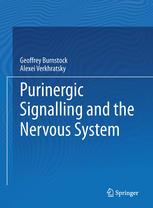

Most ebook files are in PDF format, so you can easily read them using various software such as Foxit Reader or directly on the Google Chrome browser.
Some ebook files are released by publishers in other formats such as .awz, .mobi, .epub, .fb2, etc. You may need to install specific software to read these formats on mobile/PC, such as Calibre.
Please read the tutorial at this link: https://ebookbell.com/faq
We offer FREE conversion to the popular formats you request; however, this may take some time. Therefore, right after payment, please email us, and we will try to provide the service as quickly as possible.
For some exceptional file formats or broken links (if any), please refrain from opening any disputes. Instead, email us first, and we will try to assist within a maximum of 6 hours.
EbookBell Team

4.7
76 reviewsIn the first 20 years that followed the purinergic signalling hypothesis in 1972, most scientists were sceptical about its validity, largely because ATP was so well established as an intracellular molecule involved in cell biochemistry and it seemed unlikely that such a ubiquitous molecule would act as an extracellular signalling molecule. However, after the receptors for ATP and adenosine were cloned and characterized in the early 1990s and ATP was established as a synaptic transmitter in the brain and sympathetic ganglia, the tide turned. More recently it has become clear that ATP is involved in long-term (trophic) signalling in cell proliferation, differentiation and death, in development and regeneration, as well as in short-term signalling in neurotransmission and secretion. Also, important papers have been published showing the molecular structure of P2X receptors in primitive animals like Amoeba and Schistosoma, as well as green algae. This has led to the recognition of the widespread nature of the purinergic signalling system in most cell types and to a rapid expansion of the field, including studies of the pathophysiology as well as physiology and exploration of the therapeutic potential of purinergic agents.
In two books, Geoffrey Burnstock and Alexej Verkhratsky have aimed at drawing together the massive and diverse body of literature on purinergic signalling. The topic of this first book is purinergic signalling in the peripheral and central nervous systems and in the individual senses. In a second book the authors focus on purinergic signalling in non-excitable cells, including those of the airways, kidney, pancreas, endocrine glands and blood vessels. Diseases related to these systems are also considered.